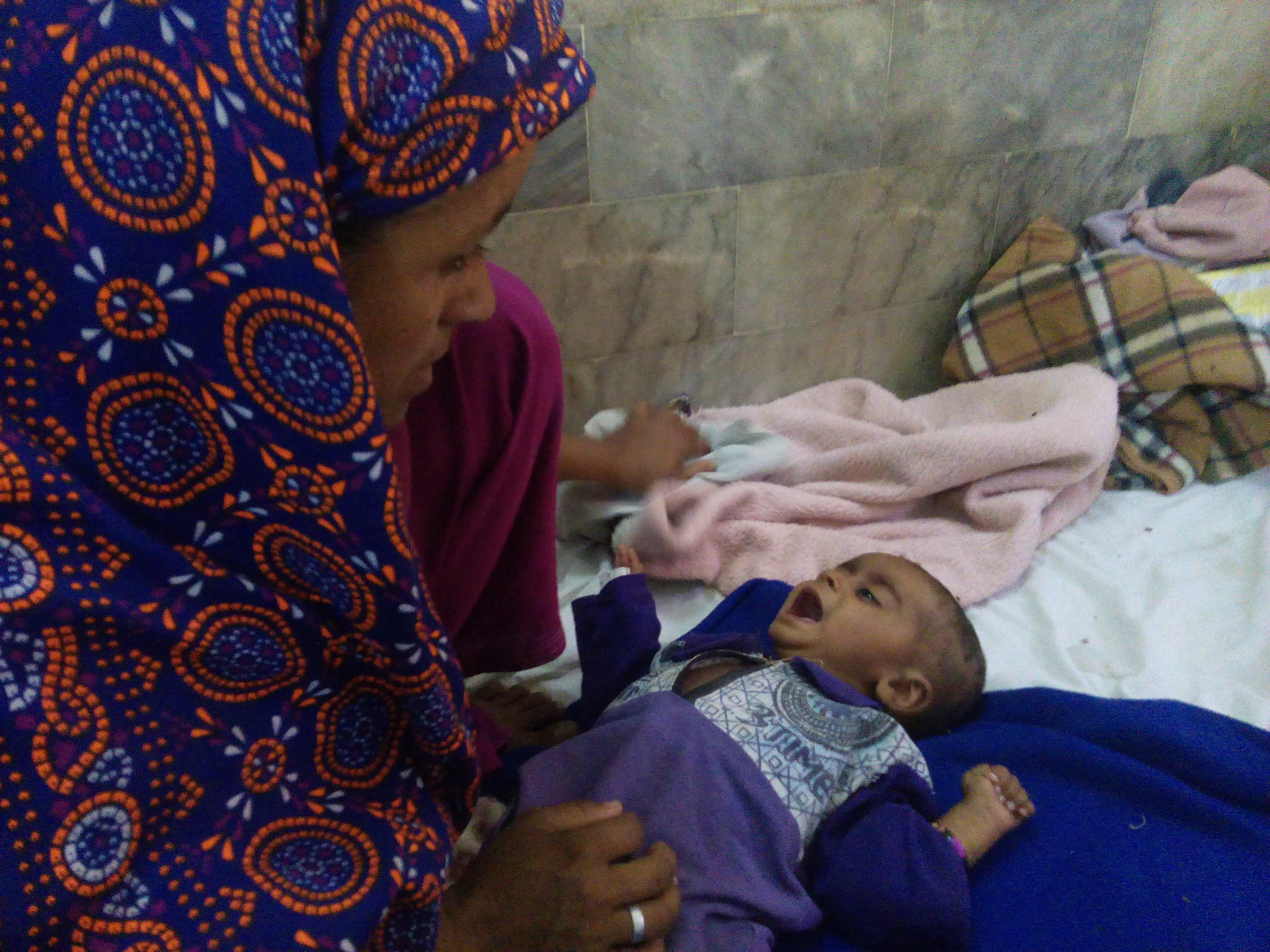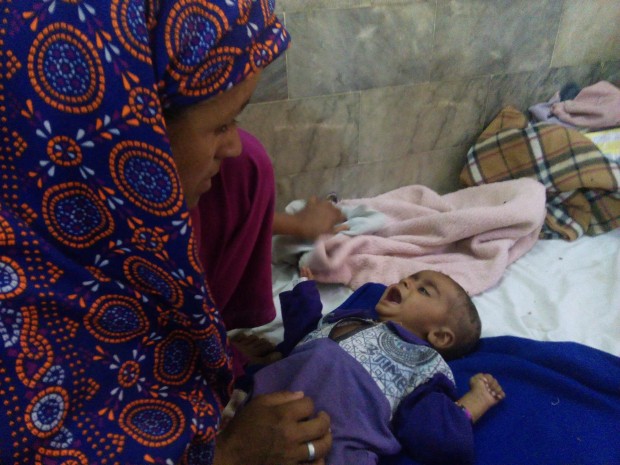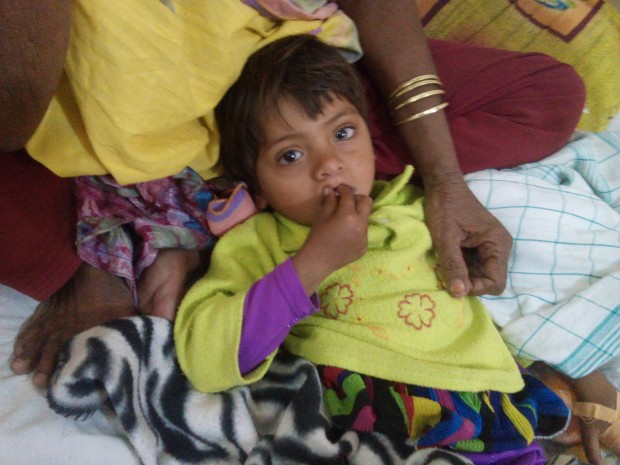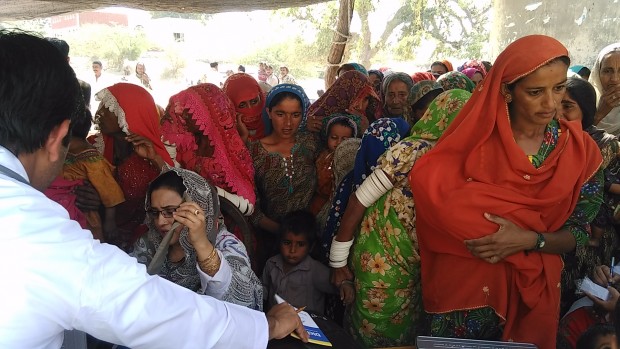
Over 150 Children die in fresh outbreak of diseases in Thar Desert of Pakistan

At least 150 children have died of waterborne disease since January this year in Pakistan’s impoverished desert district of Tharparkar, which has been devastated by drought since 2013. The media reports suggest the death toll around 173 but the government authorities have termed it an ‘exaggerated figure’.
Civil society groups and opposition politicians say the Sindh provincial government’s response to the crisis has been insufficient to prevent widespread hunger and disease.
“We have not seen any benefits, despite government claims,” said Kamla Bibi of a local civil society group called ‘Thardeep’ at Mithi town, the headquarters of Tharparkar district, bordering India.
Nisar Khuhro, the provincial government spokesman, admitted there were problems, but told that problems of suffering people were being “urgently addressed”.
Yet, four years into the crisis, farmers are still in need of seeds and fertilizer, according to preliminary data in an unpublished report being prepared by the Pakistan Food Security Cluster, which is led by the United Nations Food and Agricultural Organization and the World Food Program.
New irrigation systems also need to be built and old ones repaired, according to a draft of the report obtained by Integrated Regional Information Network (IRIN) of the United Nations.
Officials from the FAO and WFP cautioned that the survey results have not been finalized and that the findings of the report could change. But there is no doubt that people are suffering as harvests fail and livestock die.
This is especially true in the hard-hit southeast of Sindh province, where Tharparkar is located. Although 96 percent of households surveyed said they had received food assistance during the preceding two years, 90 percent said drought had adversely impacted their food consumption.
“It can be safely concluded that food deprivation caused by the drought in the southeast is increasing and worsening malnutrition, especially among children, pregnant and lactating women,” says the draft report.
In addition to lack of food, 68 percent of households surveyed in Tharparkar reported that they drew water from potentially unsafe sources, which exposes them to diarrhea that can cause malnutrition and vice-versa. The conditions “can be linked in a vicious cycle amongst children,” according to the World Health Organization.
According to report by Al-hasan Systems, a company that specializes in gathering humanitarian data, at least 139 children died in Tharparkar in January. Al-hasan Systems attributed the deaths to a combination of drought-related disease and poor access to healthcare.
Asha Bibi, who heads a local civil society group called Polki, said his organization also counted at least 100 deaths from hospital records, but she told IRIN that it was possible that adults or other children were dying.
“These are the children who die in hospitals,” she said. “There could be other deaths occurring in small hamlets and villages which we know nothing about.”

The survey carried out by the Food Security Cluster highlighted that access to healthcare is a major problem in the region. The average distance to health facilities in Tharparkar is 17 km. Out of the nine districts surveyed in Sindh, researchers found that households in Tharparkar travel the longest distance on average to access healthcare services.
Even if a sick person makes it to a clinic, they may not receive adequate care. There are only 298 doctors in the district, which is home to more than 1.3 million people. More than 215 village dispensaries meant for medication and providing minor healthcare are “non-functional”, according to Al-hasan Systems.
The deaths of children in Tharparkar have sparked fierce debate in the provincial legislature. Opposition members proposed in the January 28 session that the government requires new doctors entering the public health system in Sindh to work for a period of time in Tharparkar.
Khuhro, the provincial government spokesman, was quoted as saying by IRIN that the government is committed to improving health facilities, although he did not provide details of the plan.
“We are doing everything we can to improve conditions at hospitals,” he said.
Nand Lal, a local journalist of desert district, told The AsiaN that the deaths of children are reported round the year but the kids born weak owing to malnutrition are prone to different ailments during extreme hot and cold weather in summer and winter seasons. “The male and female population of this district use to live in very unhygienic conditions. Moreover, the pre-mature deliveries due to malnutrition are often reported from remote villages where the services of untrained conventional midwives are hired, which aggravate the situation,” he said.
According to him, most of the basic health units are virtually non-functional owing to dearth of doctors. “Over 120 posts of doctors in such health units are lying vacant, as the doctors are not willing to serve in desert areas. Even the doctors appointed by the government, disappear from the duties.”

Meanwhile, finding no solution to the issue, Chief Minister of Sindh Province Syed Qaim Ali Shah constituted a Judicial Commission to investigate the situation in Thar Desert in the wake of continuing deaths of children because of malnutrition and waterborne diseases. The two-member commission headed by a retired Justice has been tasked to complete its inquiry. The commission will look into reasons for children’s death, impact of measures taken by the government, point out shortfall in efforts/policy and suggest measures for improvement.
Latest reports from Thar put the death toll of children at 173 since Jan 1 because of waterborne diseases and malnutrition, however, the Chief Minister says the figure is exaggerated.
Taking notice of media reports, the chief minister said the government had taken practical measure for poverty alleviation in Thar. He wondered how the government could know about each and every child in the desert area, where the communication system was not so good, and claimed that deaths of children being reported in Tharparkar were largely on account of maternity-related complications and not from hunger or lack of food.
If there was drought and lack of healthcare facilities, then men and women would also have suffered equally, he said, adding that this was injustice to hold his government responsible for a thing that was not even prevailing.
“I have improved health services, upgraded basic health units, dispensaries and hospitals by providing equipment and have doubled the budget for medicines.”
Despite that, Mr. Shah said, media reports were saying that infants’ deaths were on the rise.



One thought on “Over 150 Children die in fresh outbreak of diseases in Thar Desert of Pakistan”
Till today in 45 day’s 195 children reported death